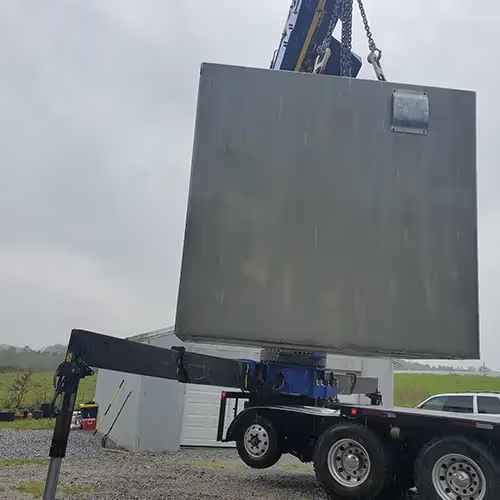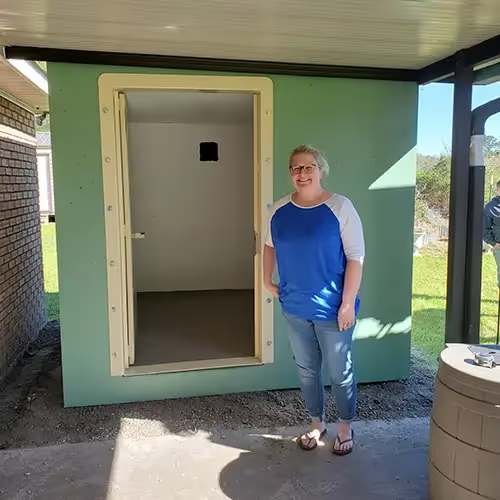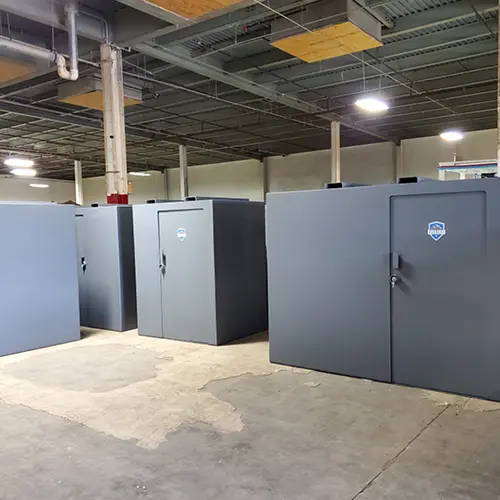Alabama Storm Shelter Safety Guidelines Families Need Now


When the skies darken and tornado sirens blare across Alabama, you don’t want to be wondering whether your storm shelter is ready. Severe storms and tornadoes in this region strike quickly, and families must be proactive about safety. Following Alabama tornado shelter tips and maintaining a solid family storm preparedness Alabama strategy ensures your loved ones are protected. Preparing a shelter involves more than just construction—it’s about stocking essentials, planning for emergencies, and creating a practical emergency weather plan for families that is easy to execute.
A well-prepared shelter aligns with safe room construction guidelines and incorporates a home storm shelter checklist to confirm every detail, from ventilation to flood mitigation. Keeping a family emergency supply list and practicing tornado safety tips for parents ensures no one is left behind during a crisis. Being ready also involves knowing the location of community storm shelter locations and reviewing local storm shelter regulations to comply with legal requirements and safety codes.
By investing time and effort into your shelter’s readiness, you provide peace of mind and enhanced Alabama severe weather safety for everyone in your household. Even small steps—like ensuring proper drainage and flood risk measures, checking ventilation, or practicing quick access—can significantly increase survival chances. Today, every family can take proactive measures to turn fear into confidence and establish a secure haven against unpredictable storms, hurricanes, and extreme weather events.
A Brief Look at Storm Shelter Safety in Alabama
Storm shelters have been integral to Alabama life for decades. In the past, families relied on simple underground bunkers or root cellars. Over time, tornado activity tracking, updated building codes, and modern storm shelter construction standards made purpose-built shelters the safest option. Today, these shelters, including safe basement setups Alabama, safe rooms, and tornado-resistant home upgrades, are recognized as some of the best storm shelters in Alabama. They are essential components of any comprehensive Alabama emergency preparedness plan.
Storm shelters are engineered to withstand extreme winds, flying debris, and even flooding. Unlike hallways or closets, these structures meet precise safety requirements, ensuring families are fully protected during tornadoes or hurricanes. Modern shelters incorporate ventilation systems, sump pumps, and emergency supplies, helping families maintain safety without panic.
Access to shelters is uneven across the state. Some neighborhoods provide community storm shelter locations, while others rely on private shelters that comply with local storm shelter regulations. Families who conduct regular storm shelter inspection tips, and practice tornado drill instructions, ensure that their shelters remain functional during emergencies.
Understanding shelter history, modern improvements, and ongoing requirements equips Alabama families to implement practical safety measures. Preparing with foresight, adhering to guidelines, and using the right tools creates a reliable safe haven where families can withstand severe weather confidently and safely.
Core Safety Principles Every Alabama Family Should Know
A safe shelter is more than walls and a roof—it requires thoughtful design, regular maintenance, and careful use. To ensure a shelter truly protects your family, every household should focus on these principles:
- Structural Integrity – Shelters must withstand tornado-force winds and hurricane conditions. Certified shelters meet residential storm shelter requirements.
- Drainage and Flood Risk – Proper water management protects the space, especially in safe basement setups Alabama, ensuring no water infiltration occurs during heavy storms (learn more).
- Ventilation – Adequate airflow maintains safety and comfort, particularly when families spend extended time in shelters.
- Accessibility – Quick entry is essential. Maintain clear safe evacuation routes Alabama, wide doors, and secure but simple locking mechanisms.
- Emergency Supplies – Keep a family emergency supply list, including water, non-perishable food, flashlights, batteries, first aid kits, and communication tools.
Additional safety measures include storm safety equipment for families, portable storm shelter options, and maintaining an updated weather emergency checklist. Routine tornado shelter maintenance and storm shelter inspection tips ensure long-term reliability. Practicing family tornado safety drills reinforces proper use and improves confidence during real emergencies.
Following these principles creates a holistic, life-saving environment. Combining structural soundness, stocked essentials, accessibility, and regular maintenance ensures Alabama families remain prepared, protecting loved ones while minimizing stress during extreme weather. The key is integrating all elements—not just focusing on one—to maintain maximum Alabama severe weather safety.
The Benefits of a Well-Built Storm Shelter
Investing in a storm shelter delivers both tangible and intangible benefits for Alabama families. A properly constructed shelter enhances Alabama storm season planning and provides peace of mind during tornadoes, hurricanes, and severe thunderstorms.
- Life-Saving Protection – A well-built shelter, including a tornado-proof room design, shields family members from high winds and flying debris.
- Peace of Mind – Confidence comes from knowing your family can safely stay in a space designed according to safe room construction guidelines and fully stocked with essentials from your home storm shelter checklist.
- Property Value – Homes with shelters often sell at higher prices, reflecting Alabama hurricane and tornado plan compliance and safety features.
- Accessibility for All – Modern shelters accommodate children, elderly family members, and people with mobility challenges, using indoor tornado safety measures like ramps and wider doors.
- Long-Term Reliability – With proper tornado shelter maintenance, shelters last decades, providing ongoing protection and value.
Beyond immediate safety, shelters help families develop structured emergency routines, integrate storm warning communication tips, and manage storm safety equipment for families efficiently. A well-planned shelter fosters resilience, reduces stress, and allows families to act decisively during emergencies. By preparing in advance, your household turns uncertainty into confidence, ensuring protection during even the most unpredictable Alabama storms.
Challenges of Storm Shelters and How to Overcome Them
Despite the benefits, storm shelters present challenges, which families must consider before investing:
- Initial Cost – The storm shelter installation cost can be significant, particularly for large or custom designs.
- Space Requirements – Not all properties have ideal locations for shelters, which may require careful planning.
- Accessibility Concerns – Older designs may limit mobility for some family members.
- Maintenance Needs – Shelters require routine upkeep, including storm shelter inspection tips and ventilation checks.
- False Sense of Security – Simply owning a shelter isn’t enough. Practice family tornado safety drills and maintain tornado survival kit essentials to stay prepared.
Overcoming these obstacles involves financing options, choosing the right design, planning for accessibility, scheduling annual checkups, and leveraging alerts from the Alabama storm alert system. Families can explore DIY storm shelter ideas and attend Alabama storm safety workshops to improve readiness.
With proactive strategies, challenges transform into manageable tasks. Planning, inspection, and practice ensure the shelter remains a reliable cornerstone of your Alabama emergency preparedness plan, providing long-term safety and peace of mind.
How to Make Your Storm Shelter Family-Ready
To ensure readiness, follow these practical steps:
- Inspect Your Shelter – Regularly check doors, locks, ventilation, and structural integrity.
- Stock Essentials – Include tornado survival kit essentials, water, food, and first aid supplies (storm cellar essential supplies).
- Create a Family Plan – Draft a family evacuation plan Alabama detailing roles, responsibilities, and communication.
- Mark Evacuation Routes – Confirm safe evacuation routes Alabama from different points in your home.
- Practice Drills – Implement tornado drill instructions frequently to reinforce quick response.
- Document Contacts – Keep printed lists of emergency numbers, neighbors, and local authorities.
- Coordinate with Neighbors – Reference local emergency shelter maps for backup support.
Use emergency preparedness resources and incorporate storm safety education for kids to strengthen overall readiness. Following these steps ensures your shelter is practical, accessible, and capable of providing true protection during emergencies.
The Future of Storm Shelter Safety
Shelter technology is evolving, providing enhanced protection for families:
- Smart shelters with sensors for real-time monitoring.
- Advanced materials reducing storm shelter installation cost while improving durability.
- Integrated communication systems leveraging storm warning communication tips.
- Portable, modular designs adapting to changing family needs.
- Sustainable features like energy-efficient ventilation and solar-powered systems.
Families can complement these innovations with DIY storm shelter ideas and participate in Alabama storm safety workshops to remain proactive and informed. Forward-thinking preparation ensures shelters are effective now and in the future.
Key Takeaways
- Proper siting and drainage minimize flood risks.
- Durable materials and smart design improve protection.
- Future-proofing with sensors, modular options, and communication tools ensures long-term effectiveness.
- Maintain tornado shelter maintenance and perform storm shelter inspection tips regularly.
- Stay updated on Alabama severe weather awareness and follow your Alabama emergency preparedness plan.
These practices significantly enhance your family’s preparedness and confidence during storms.
Staying Prepared
Storm shelter safety is a commitment. Implementing storm safety equipment for families, following your home storm shelter checklist, and practicing family tornado safety drills ensures maximum protection. Regularly reviewing Alabama tornado shelter tips and utilizing emergency preparedness resources keeps your household ready for any severe weather. Participating in Alabama storm safety workshops reinforces skills and knowledge, helping your family stay resilient and secure.




